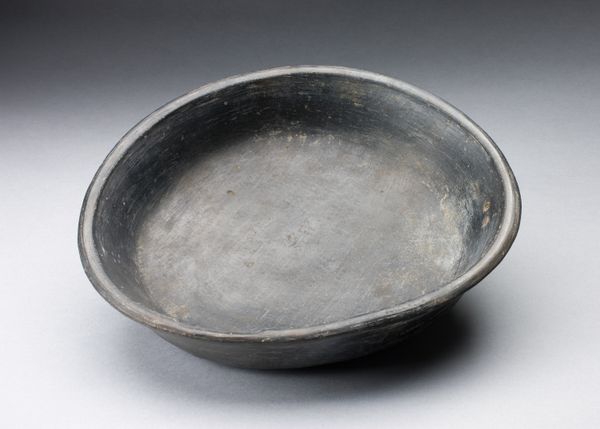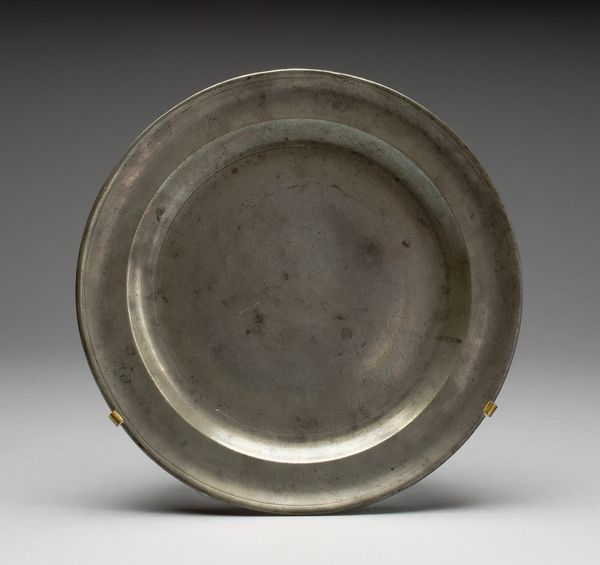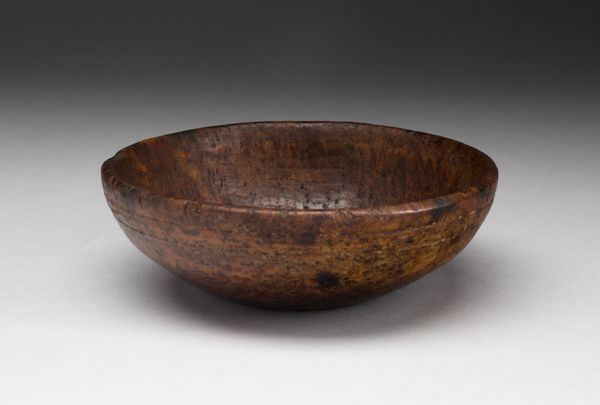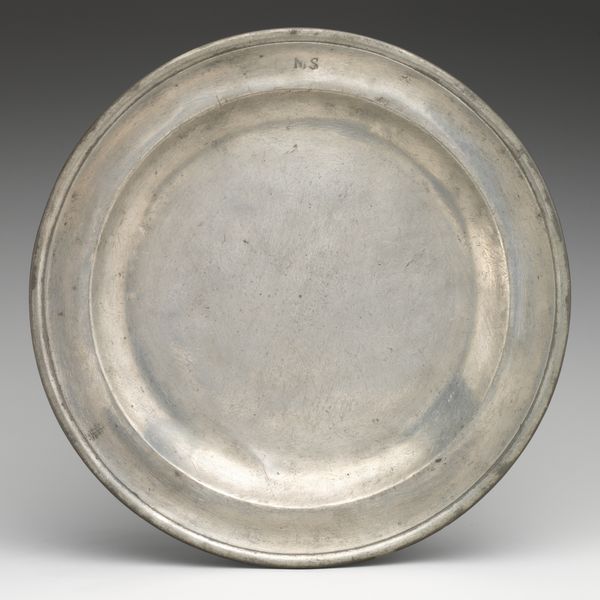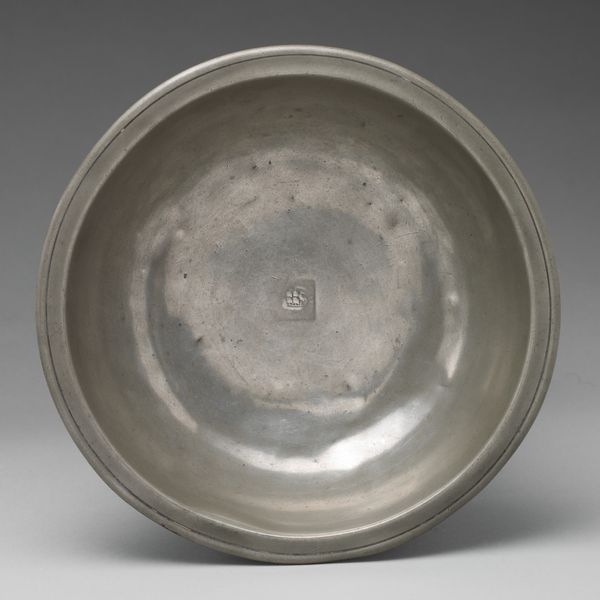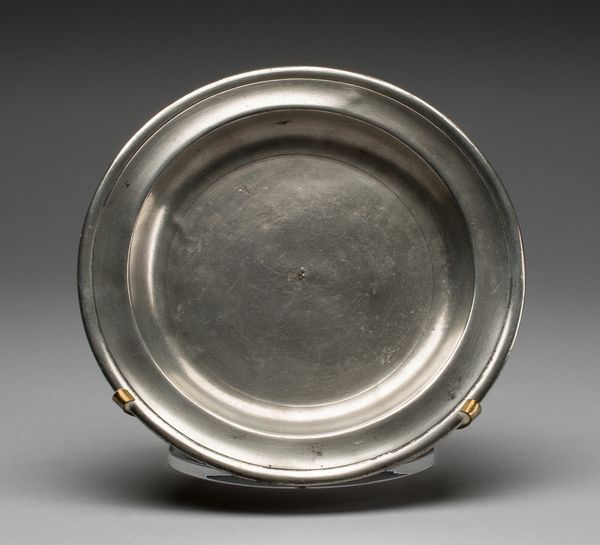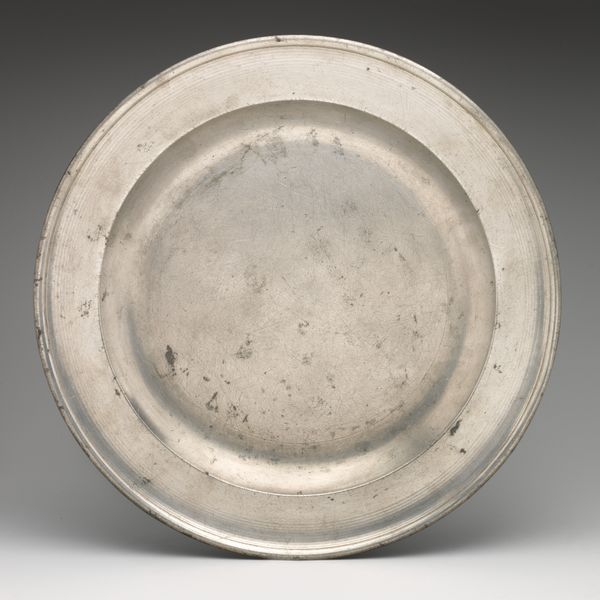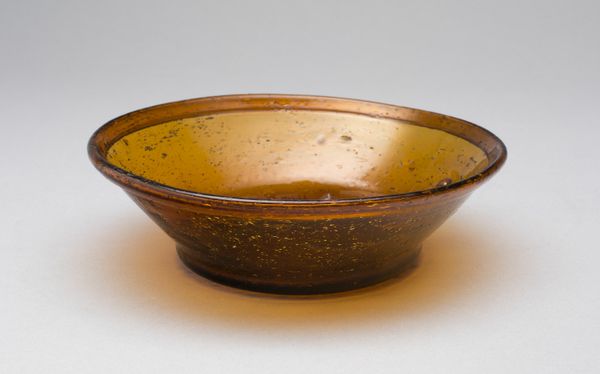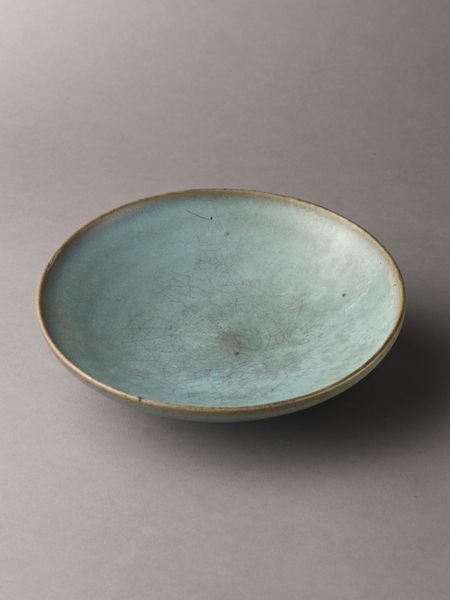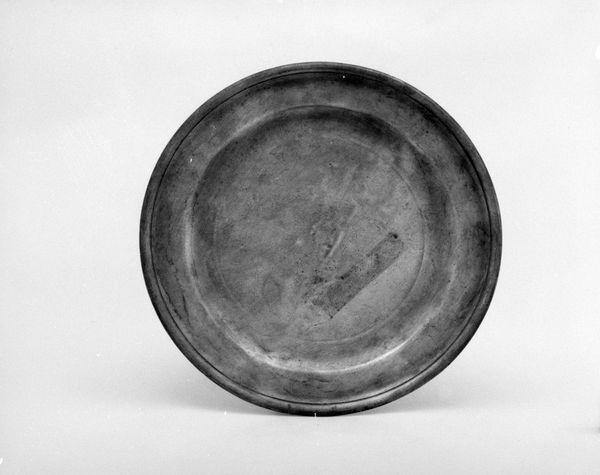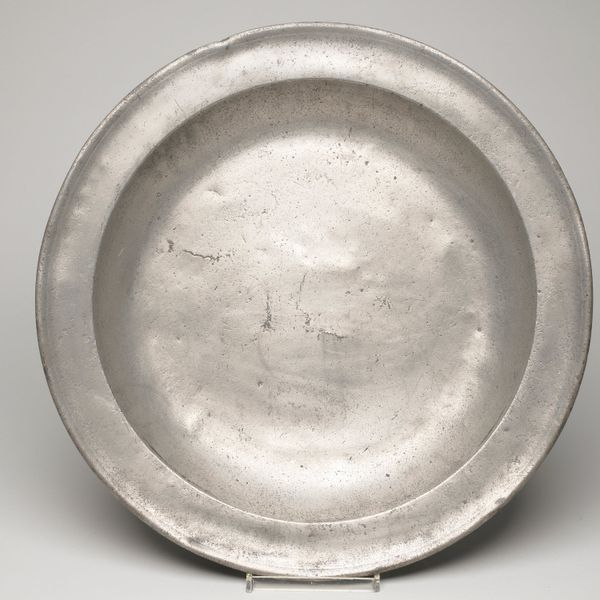
ceramic, earthenware
#
ceramic
#
earthenware
#
indigenous-americas
Dimensions: 4.5 × 24.8 cm (1 3/4 × 9 3/4 in.)
Copyright: Public Domain
Curator: The dark, almost somber color of this Paracas blackware plate really captivates me. It gives me the feeling of holding a piece of ancient night sky. Editor: Indeed. What you're looking at is a ceramic earthenware plate created around the year 500, and today, it resides here at The Art Institute of Chicago. It is titled "Blackware Plate with Fish Incised in Interior," Curator: Incised fish… I hadn’t noticed them at first glance. Their presence does nuance my interpretation—it adds an element of hidden symbolism. I’m suddenly curious about the specific tools used to engrave that design. I wonder if they made it using obsidian blades, maybe? Editor: That is very insightful of you to wonder! The smooth, burnished surface speaks volumes about the skill involved in crafting such a piece. And about the access to technology! Considering that these plates, common amongst Latin American cultures, held considerable importance in funerary practices, did that engraving process contribute additional symbolic weight? Curator: Undoubtedly. We're talking about ancestral Andean practices; about what roles such materials performed within them; about the way blackware ceramics became an important cultural form across vast geographical stretches! So the plate itself is just as worthy of focus. Editor: Right. When we view these artifacts through that lens, we can unpack larger narratives, societal power dynamics. Who were the potters, who commissioned them, and how did access to such items reflect social status? Curator: Exactly! Consider the socioeconomic status attached to such intricate works! By looking at indigenous labor as an essential feature, this object's social and historical presence truly shines through. Editor: Reflecting on this discussion, the unassuming blackware plate transforms. Curator: From simple utilitarian ware to a window into ancient Andean life. Editor: Exactly, highlighting the importance of historical context when interpreting the piece, a timeless, cross-disciplinary practice.
Comments
No comments
Be the first to comment and join the conversation on the ultimate creative platform.
